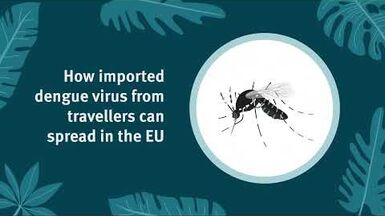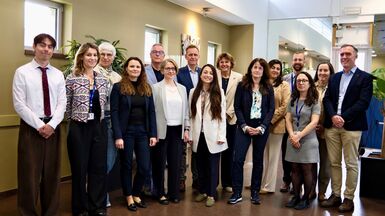ECDC Director stresses 'one health' approach to tackle antimicrobial resistance problems in humans and animalsArchived
To help prevent antimicrobial resistance (AMR) in Europe, the Danish EU Presidency invited ECDC to join a European conference held yesterday to "conclude common EU measures for combating antimicrobial resistance
To help prevent antimicrobial resistance (AMR) in Europe, the Danish EU Presidency invited ECDC to join a European conference held yesterday to "conclude common EU measures for combating antimicrobial resistance".
Representing ECDC was Director Marc Sprenger who presented the trends of AMR and stressed that prudent use of antibiotics is crucial, both in humans and in animals.
"Antimicrobial resistance has become a major public health threat," he said. "In 2009, ECDC and the European Medicines Agency (EMA) estimated that each year 25,000 Europeans die as a direct consequence of a multidrug-resistant infection."
Although there is a declining trend of meticillin-resistant Staphylococcus aureus, commonly known as MRSA, a so-called "superbug", there is increased resistance in other bacteria like Klebsiella pneumoniae - a bacterium commonly found in hospital infections. Dr. Sprenger said that "As a consequence, doctors in hospitals must increasingly rely on the type of antibiotics that should be seen as the last available resource to treat these patients, so-called last-line antibiotics." "And there are even worse news", added Dr. Sprenger, "since Klebsiella pneumoniae is now even starting to show resistance to the main last-line class of antibiotics, known as carbapenems." He added that not only does antimicrobial resistance have a significant human impact, but it also has large economic consequences." In the joint report with EMA, the economic impact was estimated at € 1.5 billion per year.
The situation in animalsIn relation to this, Dr. Sprenger mentioned a new report that ECDC produced jointly with the European Food Safety Authority (EFSA) showing that resistance to several antimicrobials was commonly detected in zoonotic bacteria such as Salmonella and Campylobacter. "This report makes an important contribution to current work being carried out at EU-level to fight antimicrobial resistance," he said.
He pointed out the varying trends in antibiotic consumption in animals and in humans in Europe. "The problems of high antibiotic consumption levels in both humans and animals, and of AMR, cannot be solved in isolation. Animals and humans are one health. The European Commission advocates for the ‘One health’ aspect in order to tackle AMR. Prudent use of antibiotics is crucial, not only in humans but also in animals," he said in conclusion.#
AMR is one of the health priorities of the Danish EU Presidency. The conference, held in Copenhagen aims to address the challenges of AMR by exchanging best practices and discussing solutions such as improving the data collection and surveillance, stopping the overuse of antibiotics, and reducing the use of the critically important antibiotics.







